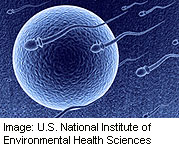
SATURDAY, May 5 (HealthDay News) — Birth defects are more common after certain infertility treatments, but whether the cause is the assisted reproduction techniques themselves or the underlying biology preventing conception isn’t clear, Australian researchers say.
“While treatments appear quite safe, we cannot ignore that there are significant risks that require urgent investigation with additional ongoing studies,” said lead researcher Michael Davies, an associate professor at the Robinson Institute of the University of Adelaide.
For the study, published online May 5 in the New England Journal of Medicine, Davies and colleagues collected data on more than 6,100 births achieved using assisted reproductive technology in South Australia.
The investigators compared these births with a registry of more than 300,000 births, looking for the risk of birth defects associated with infertility treatments compared to unassisted pregnancies. “Spontaneous” pregnancies in women who previously had infertility treatments were also considered.
Overall, with assisted reproduction methods, the risk of any birth defect was 8.3 percent compared with 5.8 percent for unassisted pregnancies. These included cleft palate, and heart, gastrointestinal and esophageal defects.
For in vitro fertilization (IVF), the risk for birth defects was 7.2 percent. For intracytoplasmic sperm injection (ICSI), it was 9.9 percent. In IVF, eggs are retrieved from a woman’s ovaries and fertilized by sperm in a lab before being returned to her uterus. With ICSI, a form of IVF, a single sperm is injected into the center of an egg cell to aid fertilization.
Women using clomiphene citrate at home to stimulate ovulation had triple the risk of birth defects, the researchers noted.
“Although this finding was identified in a small subgroup, it is consistent with a large U.S. study from early 2011,” Davies said.
“The excess risk for IVF could be explained by patient characteristics, such as age or weight,” Davies said. “In contrast, the risk for ICSI could not be explained by available factors.”
It appears that a history of infertility may be associated with increased risk, independent of treatment, he noted. “This may be due to underlying patient factors,” he said.
Using frozen embryos substantially reduced the risks from ICSI, suggesting the association is related to the embryo, Davies said.
A limitation of the study is that the most recent data is 10 years old, which was necessary to allow five years of follow-up for all births, Davies pointed out. “However, treatments have evolved and ICSI pregnancy rates have improved since, perhaps suggesting risks may be lower today,” he added.
Dr. Avner Hershlag, chief of the Center for Human Reproduction at North Shore University Hospital in Manhasset, N.Y., said it is important to interpret these findings for patients “so they don’t freak out.”
The risk of having a baby with a birth defect is only 2.5 percent greater in those using assisted reproduction than in those having a baby without it, Hershlag said.
Also, most people who use assisted reproduction are older than those who have children on their own, and older patients have a greater risk of having a child with birth defects, he said.
“So when they take age and other factors into account, IVF no longer poses an increased risk,” Hershlag added. “This is excellent news for our patients.”
The problem with ICSI is not new, Hershlag said. It most likely has to do with genetic problems in the sperm that is being injected from men who are very deficient in sperm production. “Those males don’t necessarily have normal DNA,” he said.
However, patients need to know the risks, “without being scared to death,” Hershlag stressed.
More than 90 percent of in vitro fertilization babies will be normal, he said. “Of those who have defects, many of those defects are very minor and correctable,” he added.
“There are now over 5 million human beings around the world that have been created through reproductive technologies, most of whom would not have existed,” Hershlag said.
Dr. Glenn Schattman, president of the Society for Assisted Reproductive Technology, said in a society statement that “women with a history of infertility who did not undergo assisted reproduction technology treatments also had a higher increase of having children with birth defects.”
He added that “some results in this study are reassuring for patients: in cycles not including ICSI, the adjusted odds ratio for IVF-conceived children did not show a significant difference in birth defects, and children born following embryo freezing had no higher risk of birth defects than naturally conceived children.”
Dr. David Cohen, chief of reproductive medicine and an associate professor of obstetrics and gynecology at the University of Chicago, added that the risk is something prospective parents need to accept.
“The risk doesn’t cause patients to not go ahead, it causes them to think twice. In the end most people proceed,” Cohen said.
More information
For more information on assisted reproduction, visit the U.S. Centers for Disease Control and Prevention.

